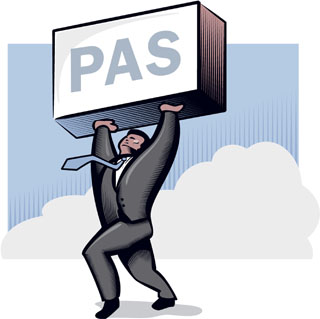 Given that this edition of Tech Decisions focuses on policy administration systems (PAS) it seems useful to revisit the issue in this column of what a PAS actually is. In previous articles we touched on the notion that although we commonly refer to and discuss PAS there actually is no common definition of what one is.
Given that this edition of Tech Decisions focuses on policy administration systems (PAS) it seems useful to revisit the issue in this column of what a PAS actually is. In previous articles we touched on the notion that although we commonly refer to and discuss PAS there actually is no common definition of what one is.
This led to the search for those minimal characteristics without which a PAS is not a PAS. The result of that reductionist exercise was to identify a product definition capability—coverages, limits, deductibles and rules; and a policy life cycle transaction set—quote, issue, endorse, cancel/reinstate, renew, audit—as being the core of what a PAS is.
While this is still correct it misses the point that, like modern day Americans, policy systems are putting on weight. Most vendors offer functionality well beyond this minimal core so it's worth taking a tour around the PAS world to learn what to expect.
Recommended For You
Want to continue reading?
Become a Free PropertyCasualty360 Digital Reader
Your access to unlimited PropertyCasualty360 content isn’t changing.
Once you are an ALM digital member, you’ll receive:
- Breaking insurance news and analysis, on-site and via our newsletters and custom alerts
- Weekly Insurance Speak podcast featuring exclusive interviews with industry leaders
- Educational webcasts, white papers, and ebooks from industry thought leaders
- Critical converage of the employee benefits and financial advisory markets on our other ALM sites, BenefitsPRO and ThinkAdvisor
Already have an account? Sign In Now
© 2025 ALM Global, LLC, All Rights Reserved. Request academic re-use from www.copyright.com. All other uses, submit a request to [email protected]. For more information visit Asset & Logo Licensing.








